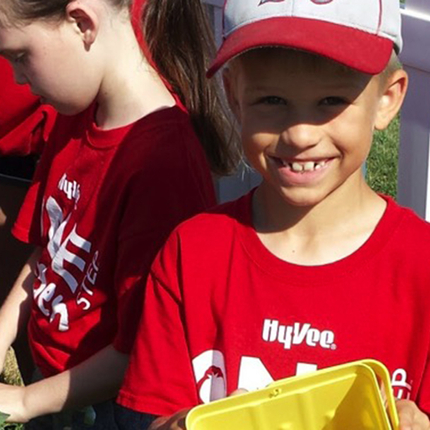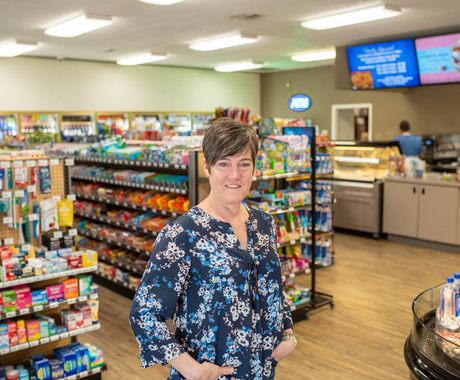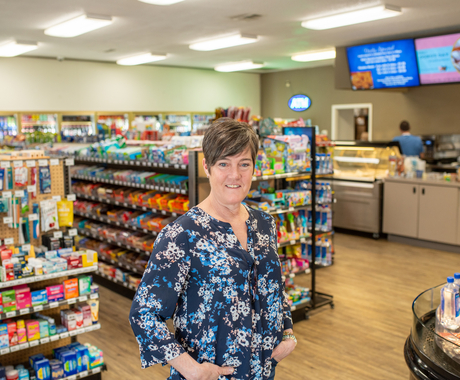By Elisha Smith, former staff member
Getting a local food system into place doesn’t come overnight. It’s a one step at a time process. And that’s exactly what the “One Step” Garden at the Clarinda Regional Health Center in Clarinda, Iowa, is doing.
The health center has built an employee garden that houses several raised garden beds. The dietary department tends one garden with tomatoes for cafeteria use, and hospital staff use the other gardens. In addition, the hospital has teamed up with the local Hy-Vee to co-sponsor the One Step Garden for kids.
Molly Gilmore, a dietitian at the Clarinda Regional Health Center, was interested in ideas on how to improve and expand the garden and ways to infuse more local food into the community, including local schools.
She took that first step to have more access to local food community wide by attending the Midwest Farm to School Conference, hosted by the Center for Rural Affairs this past spring in Nebraska City, Neb. The event highlighted methods of increasing children’s knowledge about local and healthy foods, increasing the amount of local foods consumed by kids, and building knowledge for hands-on farm to school practices, like gardens.
I recently caught up with Molly and she reports that she hopes to partner with the local elementary school to explore options for a Farm to School program. She also came away from the conference with new ideas for the garden including the children’s One-Step Garden.
The One-Step Garden program consists of a 10-week class (June to August) where kids get to plant, grow, harvest and cook with fresh fruits and vegetables.
Once a week, the children water and pick produce from the garden. They then use that produce to create a recipe to try in the outdoor classroom. They keep a journal of all the fruits and veggies they have learned about and what recipes they have tried.
The children also play a game called “plants and robbers” where they eradicate unwelcome trespassers who are robbing precious water and nutrients from the fertile soil… otherwise known as “pulling weeds” to adults.
Studies show that children who learn to grow vegetables are more likely to eat healthily. According to food researchers at Ohio State University and Cornell University in New York, children are five times more likely to eat salad when they have grown it themselves.
Moreover, children who garden learn new skills, have fun, play and develop self-confidence by spending time in the garden tending plants and growing their own food.
It may be called the “One Step” Garden, but it is a significant step in the right direction to get more kids on the path to better health by increasing the consumption of vegetables.
If you are ready to take that first step to get a local food food system in place, whether it’s to your community, local school, or even the hospital cafeteria, check out the resources we have available at www.cfra.org/f2s.
Feature image: A young participant of the One Step Garden proudly displays some peas he raised. Photos by Molly Gilmore.




